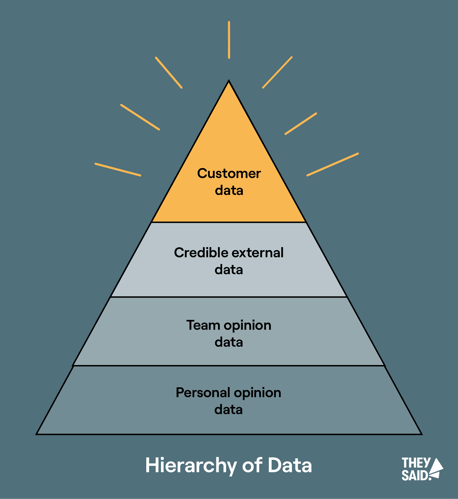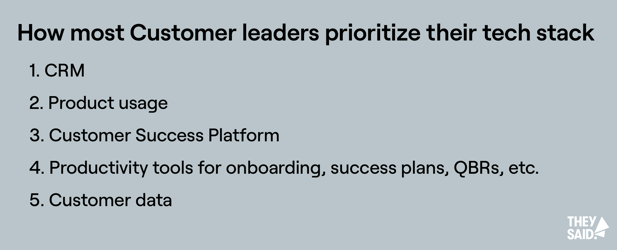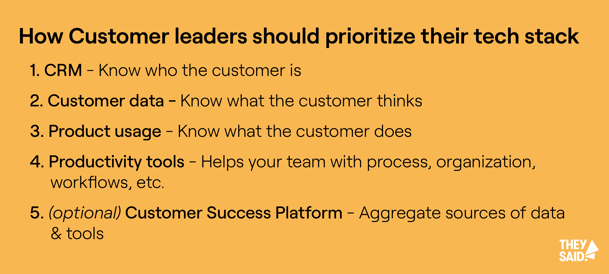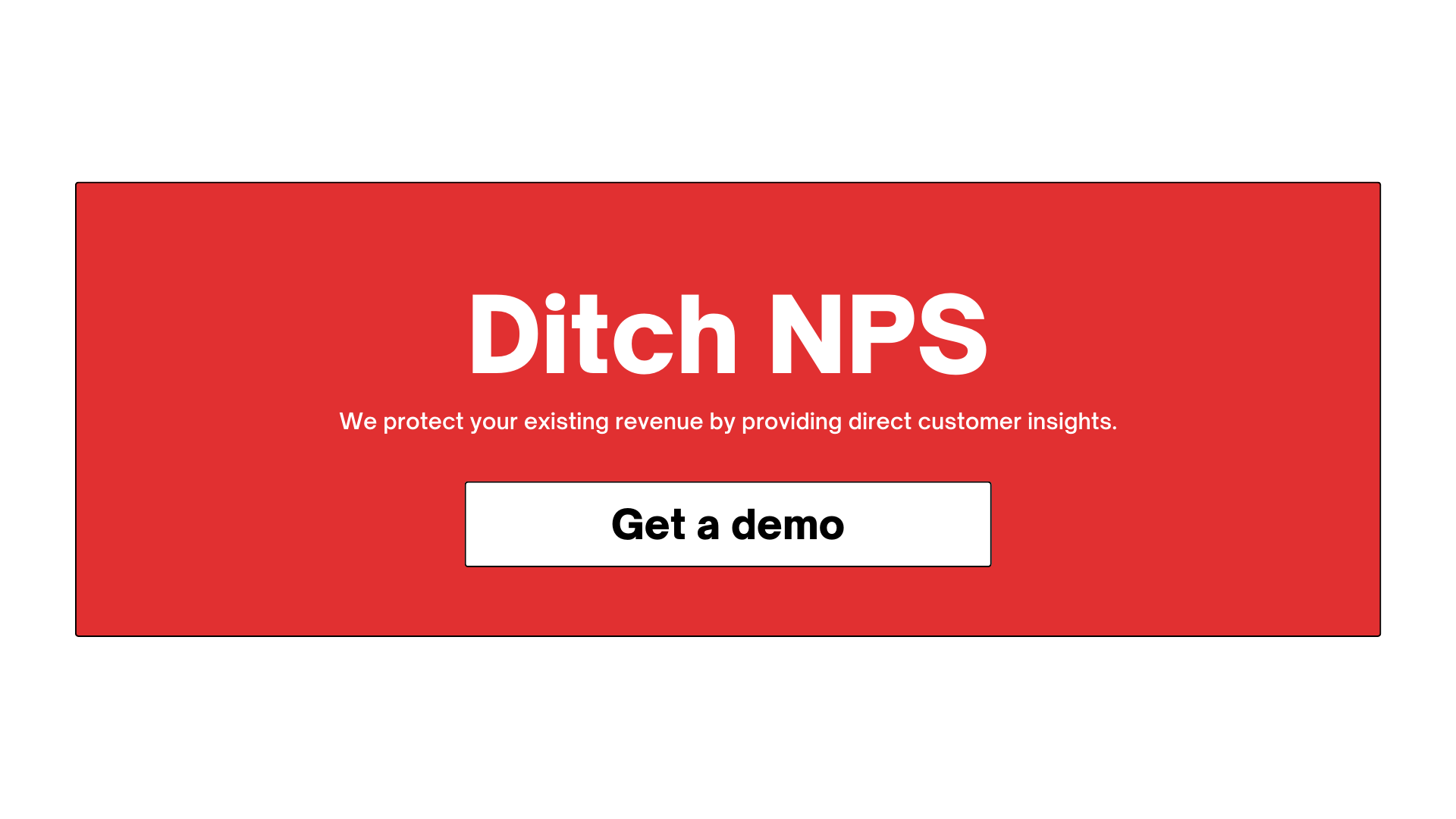
When it comes to investing in the stock market, Warren Buffet famously offered the advice to “Be fearful when others are greedy and greedy when others are fearful.” I argue that the same thought process should be applied in the down market of today’s tech world—while seemingly everyone around us is tightening their belts, I say it’s actually a great time to invest.
Think about it. Some of the most legendary companies in the last century came out of hard times.
- Microsoft - founded in the recession of the early 1970s.
- Hewlett-Packard - founded during the Great Depression.
- Airbnb - established in the global financial crisis.
- Slack - founded during the Great Recession.
- Uber - launched during the Great Recession.
- Dropbox - founded during the late-2000s financial crisis.
And it wasn’t because they went into survival mode. It’s because they were bold and they were smart. In life and business, when everyone around you is panicking, you have to be brave.
There's an ethos right now across the technology industry of, “It’s a down economy, so I need to be efficient and I need to save money.” And the way that a Customer leader usually thinks about this is, understandably, “Well, I can't cut my team. I have to protect the headcount that I have.” So the focus on cutting expenses naturally shifts to our tooling.
Here’s the thing—you can preserve headcount and invest in tools. In this piece, I’ll be sharing why I think, rather than buckling down and being cautious, you need to invest in the tech that’s going to protect your revenue and improve your product and customer experience.

So it’s a good time to invest in tech…but how?
In a tough economy, the place people usually start cutting the fat is by getting rid of unessential tools from their tech stack. The idea of purchasing new tools is suddenly taken off the table. No new headcount. No new spend. No new tools. No new things.
But this mindset of “no new spend” is the wrong way to think about saving money.
The questions we need to be asking ourselves are:
- How do we invest smartly?
- How can we protect revenue most effectively?
- Which technologies protect revenue best?
- What am I already paying for that I could better leverage?
Invest in retention technology
To invest smartly in tech, the first step is to start prioritizing tech that protects your revenue. And in tech, high customer retention = revenue. So the strategy shouldn't be to save money at all costs. It should be to save accounts at all costs. Even if it means spending new money, doubling down on investments that can save the most revenue and drive the most growth is the way to becoming as efficient as possible and surviving this downturn.
Think about it this way–technology can be a revenue-generating and account-protecting asset. And the technologies that protect revenue and retain customers more than any other are the ones that surface churn risks, scan for expansion opportunities, and help your team act on customer feedback. In some cases, the smartest decision you can make is to buy a new tool that is a fraction of your current headcount spend, but that can have an outsize impact on saving accounts and creating growth via upsells and cross-sells.
In essence, you need to prioritize tools that help with retention and establish practices that can help your team scale your retention efforts. And as a Customer leader, you are well aware of how critical retention is. But here’s the catch. There are very few tools that directly impact customer retention in the market today.
The uncomfortable truth—Customer Success is accountable for retention but doesn't control any of the top reasons for churn like:
- Missing features
- Poor product UX
- Product reliability
- Wrong ideal customer profile
- Competitive pressure
- Pricing misalignment
- Lack of internal buy-in
- The problem you solve isn't painful enough
Since Customer teams don't control these things, they instead focus on what they can control:
- Digital CS & Tech-touch
- Time To Value (TTV)
- Better QBRs
- Distinguishable use cases
- Automation and playbooks
- Usage-data insights to drive adoption
- Clean CRM data
- NPS and CSAT
You see the problem? Everyone in Customer Success is very busy doing stuff, but none of it will substantially move the retention needle. Customer Success software companies have delivered exactly what the market asked for. Unfortunately, what the market asked for were features that made it easier to accomplish low-value tasks.
Stop investing in tools that help you accomplish low-value tasks. Invest in getting more customer insights. And though it might seem like a huge lift to piece together tools (like Qualtrics, AskNicely, etc.) to get customer feedback, there is hope. Get a customer insight engine that is specifically designed to protect revenue. Then you can set it and forget it while you enjoy the flow of insights coming in every day.
Invest in customer data technology
If you’re not already, it’s time to start thinking about which technology will give you the best data to survive this down economy.
This is something our team has been thinking about for years. We have a business decision framework at TheySaid (formerly Nuffsaid), which helps ensure we put customers at the center of our decision-making. Here’s how it works.

We rank the data sources that are used in decision-making at the company in terms of credibility and importance. We seek the best possible data to propose a solution:
- Customer data & feedback
- Credible external data
- Team experience
- Personal experience
This means that any decision that uses customer data is the most credible decision that’s being made. And any decision that’s being made with less quality data can be challenged with customer data.
The problem is, very few organizations think about customer data first when building their tech stack. In fact, most Customer leaders are placing their bets on the wrong tech entirely, or they buy the right tech but in the wrong order.
So, how do you help your team be more efficient when you don’t have a budget for new tech? You must prioritize your tech stack.
As a Customer leader, there’s a particular sequence you likely stick to, subconsciously or consciously, when buying new tech to support your organization as you scale. Prioritization usually goes something like this—

Most everyone agrees that CRMs, at this point, are must-haves. But after that purchase, most Customer leaders think, “Okay, now I need a CSP for health scores”, or “We’ve got to have a tool for better onboarding to hit TTV goals”, or “My team needs a QBR framework before we start collecting customer data.”
What people don’t realize is that, regardless of business size or stage, we need to gather customer insights very early.
The problem with a Customer leader’s standard approach to tech prioritization is that it deprioritizes arguably the most important piece within any Customer Success motion and the most vital asset in your company’s possession—what the customer has to say. When Customer leaders forget to listen to the voices of their customers, they forget the foundation that their organization rests upon—qualitative customer insights.
Without customers, there is no Customer Success. Then why is it that so many Customer leaders get caught up in all the tactical minutia of running a team, setting up playbooks, reducing Time To Value (TTV), implementing fluffy process tools, and adding more product usage data?
Here’s an analogy that anyone married will understand.
Let’s say you’re engaged and preparing for your wedding. You write out your guest list. You send out invitations. You pick out the caterer. You set up a registry. You arrange the musicians. You pick out flowers. And meanwhile, you’re so preoccupied with preparing for the wedding, that you completely forgot about the person to whom you’re getting married. Your relationship suffers greatly and your partner ultimately leaves you because you neglected the only piece that really mattered–your relationship.
The same can be said of Customer Success tech. Without an advanced way to collect, analyze, and act on qualitative customer feedback, we’re forgetting the most important piece in the whole Customer Success motion.
Here’s a better way to look at your tech stack prioritization—

When you buy technology in this order, you’ll be set up for success.
You’ll be able to:
1) get quality data into your CRM and reporting,
2) have visibility into your accounts, and
3) deliver the value your customers expected to receive.
Above all, to make it through this down market, you’ll need to focus on customer data collection. Build a successful foundation by reorganizing your tech stack prioritization and invest in customer data tech.
Qualitative customer data is your path to better churn and upsell prediction
Other than being the foundation of Customer Success, customer data is the first thing you should focus on during a hard economy because the insights formed from qualitative feedback are tied to better predictions of churn and expansion. And when you can forecast better, your revenue increases. When you increase revenue, your team will no longer be viewed as a cost center by your CEO. And if your CEO views the Customer team as a revenue-generating organization, they will ultimately give you a seat at the decision-making table and be less likely to cut your budget or headcount.
And in today’s economy, where Customer Success budgets are getting slashed, billionaire enterprise software CEOs like Frank Slootman are questioning the value of Success teams altogether, and layoffs are rising within company functions that are thought of as dispensable, it’s understandable that as a Customer leader you have an urgent need to save rather than invest.
But remember—technology is a revenue-generating and revenue-protecting asset. It’s an investment to which you will see real returns.
Forget about the money. It’s time to save accounts and revenue. It’s time to invest in the right technology. The Customer leaders who will survive this downturn are the ones that realize the most important technology in a tough economy is the one that collects, analyzes, and acts on customer feedback.

CONTRIBUTORS
A special thank you to Jeff Justice Williams (Senior Executive Director of Enterprise CS at Box) and Jeff Beaumont (Senior Director CS Operations at GitLab) who contributed to and reviewed this piece.

The best resources for Customer Success teams this week
COMMUNICATION
Finding Language/Market Fit: How to Make Customers Feel Like You’ve Read Their Minds
At TheySaid, we’ve done a lot of thinking and talking about how Customer leaders can be Product-Market Fit machines for their companies. But this article by Matt Lerner, Co-founder and CEO at Startup Core Strengths, addresses a new idea to consider—as the leaders closest to the customer, how can we also help to improve our Language/Market Fit? As he puts it, “When you can understand and articulate your customers' goals and struggles and anxieties in simple, precise language, your developers and product teams will not have to guess at what to build.”
CULTURE
How Company Values Drive Customer Experience and Brand
VP of Customer Success at GitLab, David Sakamoto, joined Irit Eizips on her show, CSM Practice, to share how GitLab’s focus on strong company values has benefited employees and customers alike. Skip to 2:15 for some amazing examples of how his company upholds their core value of transparency.
LEADERSHIP
How to Spend Your First 30 Days in a New Senior-Level Role
Read Lara Hogan’s comprehensive guide to avoid common pitfalls during the first month in your new leadership position.
CUSTOMER JOURNEY
Love & Marriage
I enjoyed reading this clever piece by Aaron Thompson, CRO at SuccessHACKER. In it, he compares our customer relationships with personal relationships. A little sneak peek: sales=dating, onboarding=the honeymoon, renewal process=renewing of vows, and churn=divorce.



Submit a comment